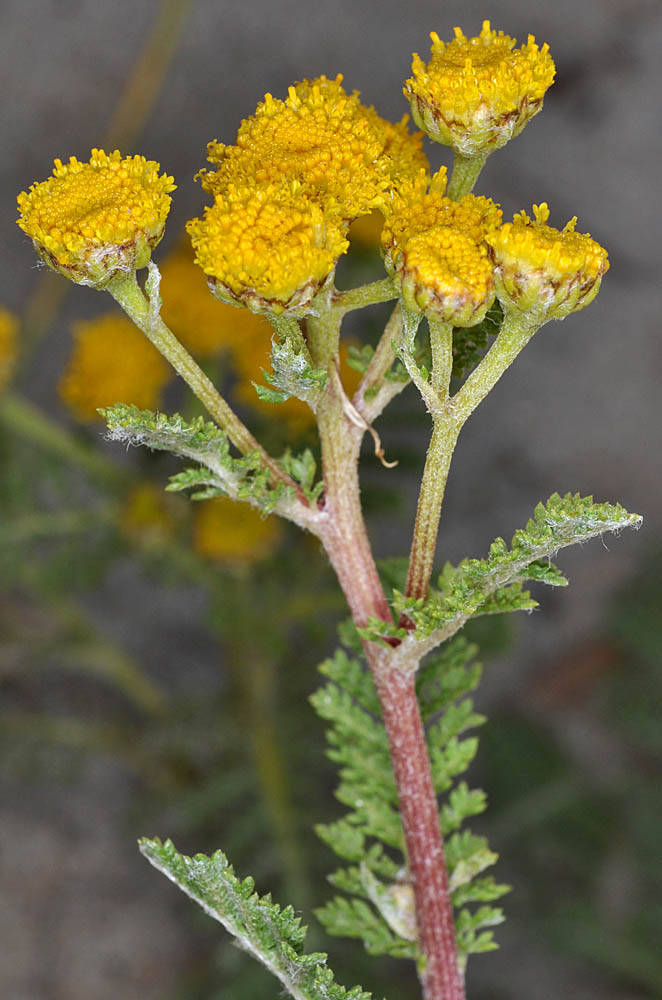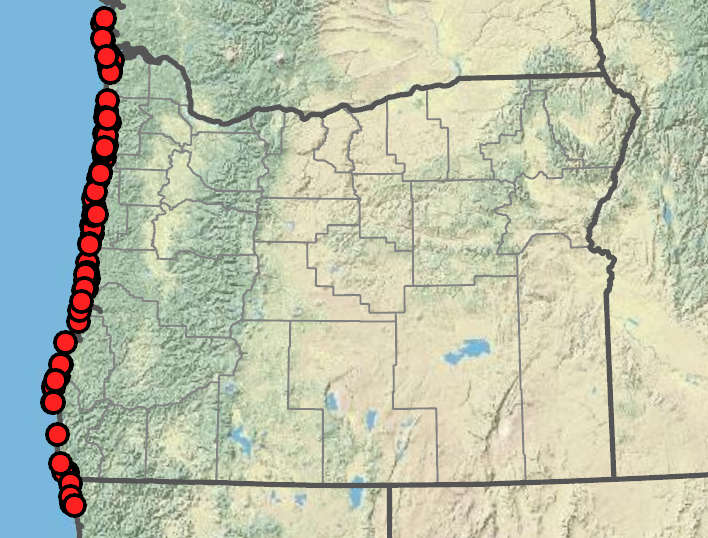Tanacetum bipinnatum
Tanacetum
dune tansy
tansy
erect; simple to distally much branched, glabrous to villous or puberulent.
oblanceolate or elliptic in outline, 3–35 × 2–10 cm;
margins often curled, 2–3-times pinnately lobed;
surfaces villous to woolly, sometimes glabrous;
primary lobes in 6–24 pairs; secondary lobes linear to ovate or obovate.
basal and cauline, alternate, bases often with lobed, fringed, or clasping auricles;
margins entire to dentate, often 1–3-times pinnately lobed;
surfaces glabrous, strigillose, floccose, or lightly to densely villous, abundantly punctate-glandular;
basal often withered by flowering, sessile or petiolate.
clusters in panicle-like arrays.
4–5 × 8–22+ mm.
campanulate or hemispheric.
flat to rounded or conic, sometimes exceeding involucres in fruit;
paleae 0.
0–25;
rays 1–6 mm, yellow.
pistillate, sometimes vestigial or 0;
rays ovate-elliptic;
tips acute or truncate, sometimes 2–4-lobed.
corollas 2–2.5 mm, yellow.
numerous; bisexual;
corollas tubular, linear or gradually widened distally, 4–5-lobed;
lobes triangular;
stamens included or slightly exserted;
stigma lobes at tips of stamen tubes.
with membranous margins; inner not membranetipped.
in 3–6 series;
surfaces glabrous, villous, or minutely glandular; inner equal, linear-lanceolate to lanceolate or ovate; outer equal or gradually shorter, lanceolate; ovate or triangular;
margins membranous or chartaceous;
tips acute or obtuse.
2–3 mm, tan;
gland-dotted, 3–5-ribbed, pappi of low crowns or a ring of scales.
obconic or columnar, glabrous or gland-dotted;
veins 5–10+;
pappi usually of low crowns, rarely of scales or 0.
2–20+;
peduncles 0.3–12 cm, villous.
usually radiate, sometimes disciform;
peduncles glabrous to strigillose or villous.
=54.
Tanacetum bipinnatum
Tanacetum
Dunes, sandy flats, bluffs, grassy slopes. Flowering May–Aug. 0–100 m. Est. CA, WA; north to AK, northeast to Newfoundland; Asia, Europe. Native.
Formerly treated as T. camphoratum, this taxon, as well as the related T. huronense, has been combined into T. bipinnatum.
Asia, Europe, North Africa, North America. 160 species; 4 species treated in Flora.
Kenton Chambers
Kenton Chambers
- Local floras:
BC,
CA,
OR,
WA
- Local Web sites:
CalFlora,
CalPhotos,
Flora NW,
PNW Herbaria
WildflowerSearch
iNaturalist (observations)
USDA Plants Database
- LBJ Wildflower Center
- SEINet
- Plants of the World Online
- Encyclopedia of Life
- Wikipedia
- Google Image Search



